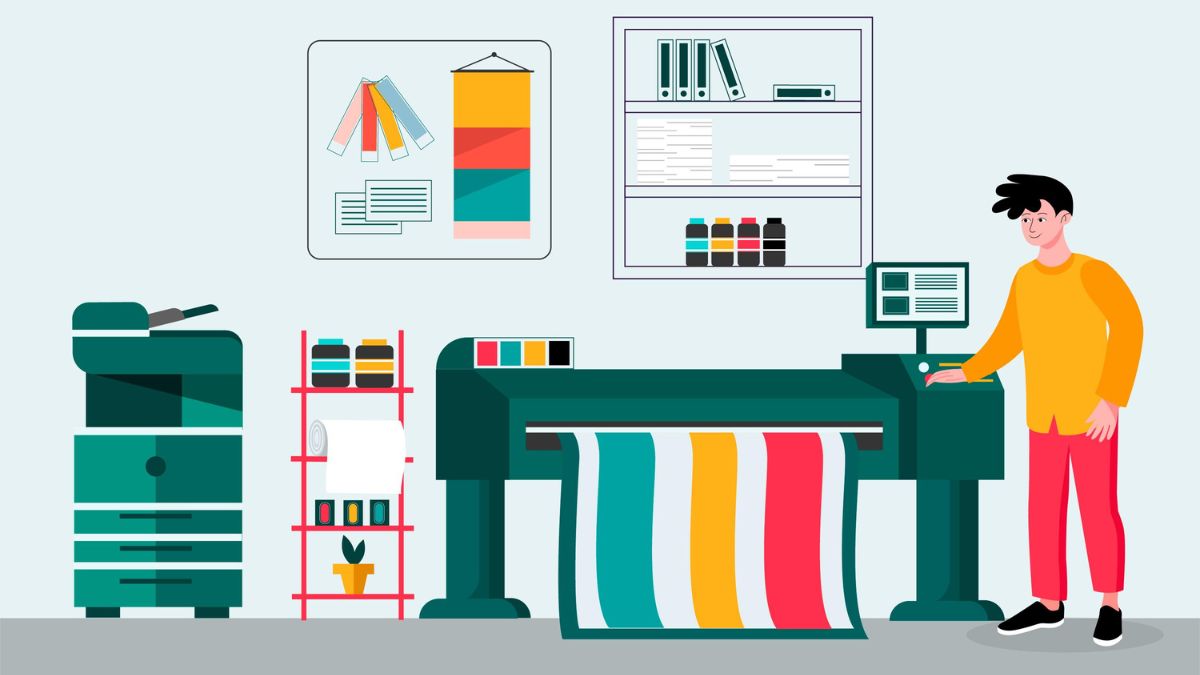BUSINESS
How to Market and Sell Surplus Inventory Effectively

Managing surplus inventory is a common challenge for businesses across various industries. If not handled properly, excess stock can tie up capital, occupy valuable warehouse space, and lead to financial losses. However, with the right strategies, businesses can turn surplus inventory into an opportunity rather than a burden.
This article will explore various approaches to maximize sales and minimize losses.
What is Surplus Inventory?
Surplus inventory refers to products that exceed the market’s demand. These items may be overstocked due to inaccurate demand forecasting, changes in market trends, seasonality, or purchasing errors. While surplus inventory is often viewed negatively, it can allow businesses to liquidate stock, recoup costs, and make room for new products.
Causes of Surplus Inventory
Understanding the causes of surplus inventory is crucial in developing effective strategies for managing and selling it. Some common causes include:

- Overstocking: Ordering excessive quantities due to inaccurate demand forecasting or overestimating sales potential.
- Slow-Moving Products: Products that have not sold as expected due to factors like poor marketing, pricing, or competition.
- Product Obsolescence: Products that have become outdated or are no longer in demand due to technological advancements or changing consumer preferences.
- Returns and Damaged Goods: Products returned by customers or damaged during shipping or storage.
Strategies for Marketing Surplus Inventory
Once surplus inventory has been identified, businesses must develop strategies to market and sell it effectively. The following approaches can help maximize returns on excess stock:
-
Discount Sales and Promotions
One of the most straightforward methods of selling surplus inventory is discount sales and promotions. Offering discounts, flash sales, or clearance events can attract price-sensitive customers and increase sales volume.
- Clearance Sales: Organize clearance sales to move excess inventory quickly. These sales can be promoted through email marketing, social media, and in-store signage.
- Bundle Deals: Create bundle deals by combining surplus items with popular products. This encourages customers to purchase more while helping to clear out excess stock.
- Loyalty Programs: Offer exclusive discounts to loyalty program members to incentivize repeat purchases of surplus inventory.
-
Online Marketplaces and Auctions

Online marketplaces and auctions provide an effective platform for selling surplus inventory to a broader audience. Platforms like eBay, Amazon, and specialized B2B marketplaces allow businesses to reach consumers and other businesses looking for discounted products.
- eBay and Amazon: These platforms are popular for selling surplus consumer goods. Listing products at competitive prices or auction formats can attract buyers looking for deals.
- B2B Marketplaces: For businesses with surplus industrial or wholesale inventory, B2B marketplaces like Liquidation.com and Alibaba can connect sellers with bulk buyers.
- Partnering with Discount Retailers
Partnering with discount retailers or off-price stores can be an effective way to move surplus inventory in bulk. Retailers like TJ Maxx, Ross, and Big Lots specialize in selling discounted merchandise, making them ideal partners for liquidating excess stock.
- Negotiating Bulk Sales: Work with discount retailers to negotiate bulk sales of surplus inventory. This approach allows businesses to move large quantities of stock quickly.
- Consignment Agreements: In a consignment agreement, businesses provide surplus inventory to a retailer, who sells the products and shares the revenue. This reduces the risk for both parties and can help clear out excess inventory.
In addition to the abovementioned strategies, consign surplus inventory to a reputable consignment service provider. This allows you to use the expertise and reach of a dedicated sales team specializing in moving surplus stock.
- Utilizing Liquidation Companies

Liquidation companies buy surplus inventory at a discounted price and resell it through their channels. While this approach may result in lower margins, it provides a quick solution for businesses looking to offload excess stock.
- Selling to Liquidators: Contact liquidation companies specializing in your industry to negotiate the sale of surplus inventory.
- Online Liquidation Auctions: Participate in online liquidation auctions where businesses can sell surplus inventory to the highest bidder.
-
Donation and Tax Benefits
Donating surplus inventory to charitable organizations can provide businesses with tax benefits while supporting a good cause. Donations can be made to non-profits, schools, or community organizations that can use or distribute the products to those in need.
- Tax Deductions: Donating surplus inventory may qualify for tax deductions, reducing the overall financial impact of excess stock.
- Corporate Social Responsibility: Donations can enhance a business’s reputation by showing a commitment to social accountability and community support.
Sales Strategies

Here’s an explanation of the sales strategies mentioned:
- Pricing Strategies
Effective pricing strategies are crucial for maximizing sales and minimizing losses when dealing with surplus inventory. Here are some options to consider:
- Discounts: Offer significant discounts on surplus products to attract customers and clear out inventory quickly.
- Percentage discounts: Provide a percentage discount on the original price of the surplus item.
- Dollar-off discounts: Offer a specific dollar amount off the price of the surplus item.
- Buy one, get one (BOGO) deals: Offer a second surplus item at a discounted price or for free when a customer purchases the first item.
- Bundle Deals: Combine surplus products with other popular items to create attractive packages that encourage customers to buy more.
- Tiered Pricing: Offer tiered pricing discounts based on the quantity purchased. This can incentivize customers to buy larger quantities of surplus inventory.
- Limited-Time Offers
Creating urgency can be a powerful tool for selling surplus inventory. Limited-time offers, such as flash sales or time-sensitive discounts, can encourage customers to purchase products before they are gone.
- Cross-Selling and Upselling
Cross-selling & upselling can increase the average order value and reduce surplus inventory. By promoting complementary products or upgrades, you can encourage customers to purchase additional items that may not have been their initial intention.
- Customer Loyalty Programs
Rewarding genuine customers with exclusive discounts or early access to surplus inventory can help build strong relationships and drive repeat purchases. This can be especially effective for clearing out slow-moving products.
- Consignment Selling
Partnering with retailers or consignment shops can be a great way to reach a wider audience and reduce your risk. By consigning surplus inventory, you can avoid the costs of storing and selling the products yourself. The retailer will typically take a commission on each sale, but this can be a worthwhile trade-off if it helps you move the inventory quickly.
Wrapping It Up
Businesses require a well-planned strategy that combines precise demand forecasts, focused marketing, and astute pricing to efficiently market and sell excess inventory. By addressing the root causes of the problem and implementing the appropriate strategies, businesses may convert excess inventory from a liability to an asset.
Using internet marketplaces, collaborating with bargain merchants, and providing discounts are important strategies. These techniques help maximize earnings and minimize losses from excess inventory.
BUSINESS
Empowering Communication: The Role of Public Speaking in Business Success

The Importance of Effective Communication in Business
Incorporating effective communication strategies is not just beneficial; it’s essential for business success. It’s a critical factor in establishing an organization’s tone and culture. Businesses prioritizing communication, such as those facilitated by a celebrity speakers bureau, unlock the potential for increased transparency and stronger relationships. This foundation manifests in enhanced team collaboration, where employees are more inclined to share innovative ideas without fear of judgment, knowing their input is valued. The influence of communication extends well beyond internal operations. Externally, clear, consistent messaging facilitates stronger connections with clients and partners. Companies that engage in effective communication are more prone to foster loyalty and trust, promoting repeat transactions and endorsements from clients who value the organization’s transparency and integrity.
Benefits of Public Speaking Skills
Speaking publicly is invaluable for individuals aiming to propel their careers forward. These skills are often a determining factor in leadership effectiveness, as those in leadership roles must articulate visions and motivate their teams toward achieving them. Public speaking facilitates more apparent thought processes, enabling leaders to present ideas coherently and confidently, ultimately driving team alignment and success. Beyond professional gains, public speaking is a catalyst for personal development. It promotes confidence, resilience, and empathy — traits that extend to various aspects of life. Public speaking also encourages a deeper awareness of personal strengths and weaknesses, prompting individuals to harness their unique voices to effect change.
Overcoming Public Speaking Fears
Fear of public speaking is widespread and often paralyzing. However, numerous proven strategies can help speakers overcome this anxiety. Seasoned public speakers, for instance, recommend thorough practice and preparation as essential steps toward minimizing stress. This preparation involves rehearsing the speech and visualizing the successful delivery of the message. Mindful breathing and concentrating on the message instead of individual performance help control anxiety. Engaging the audience by employing techniques outlined in effective communication techniques, such as storytelling and interactive questioning, further assists in dispelling fear by redirecting focus towards audience connection.
Adaptability Across Platforms
In a digital era where online events are increasingly common, the capacity to adjust communication tactics across different platforms is essential. Whether delivering a message during a virtual conference or leading a webinar, understanding the nuances of digital platforms enhances message delivery and audience engagement. This adaptability involves recognizing differences in audience behavior online versus in person and adjusting communication styles accordingly.
For instance, eye contact with the camera, even with physical separation, fosters a connection. Utilizing visually engaging presentation elements can also enhance understanding and retention of information. These adaptations ensure the message remains impactful, ensuring communicators can effectively engage audiences across multiple digital settings.
Leveraging Diverse Communication Channels
The modern communicator must be versatile, utilizing various channels such as podcasts, blogs, and social media to reach diverse audiences. Every channel presents a distinct chance to connect with multiple audience segments, each seeking customized content that aligns with their personal and professional interests. This approach not only increases reach but also reinforces brand identity and authority.
A contemporary example of effective multi-channel communication is in strategies aligning content with platform-specific audiences. In doing so, speakers can ensure their message is heard by those who benefit the most, strengthening their influence and expanding their professional networks.
Building Confidence Through Practice
While confidence in public speaking may seem a natural gift to some, it is honed through deliberate practice and experience for most. Engaging in regular speaking opportunities, whether in formal settings or practice settings, is invaluable. These platforms provide a safe space for individuals to refine their skills, receive feedback, and build confidence over time.
Additionally, integrating feedback from audiences and mentors is crucial for improvement. Constructive criticism highlights both strengths and areas for development, allowing speakers to adjust their delivery for enhanced clarity and impact. Consistent reflection and adaptation are crucial to developing a confident and dynamic speaking style.
Role of Feedback in Effective Communication
Feedback is a powerful tool that, when leveraged effectively, can significantly enhance communication skills. It allows speakers to gain insights into audience perceptions, enabling them to refine their content and delivery. Soliciting feedback through surveys, direct inquiries, or observations provides valuable information on how the message is received and interpreted. This iterative feedback process ensures that speakers can make real-time adjustments to their approach, ensuring that their communication remains effective and aligned with audience expectations. Ultimately, incorporating feedback into communication strategies fosters continuous improvement and increased engagement.
Conclusion: Public Speaking as a Lifelong Skill
The benefits of public speaking extend far beyond the podium. Effective communication is a cornerstone of personal and professional success, opening doors, breaking barriers, and inspiring change. Whether in business or daily life, embracing public speaking is a commitment to ongoing growth and empowerment. The rewards for those willing to develop this skill are plentiful, transforming careers and lives.
BUSINESS
The Art of Printing: Innovative Solutions for Modern Businesses

The Importance of Printing in Today’sToday’sToday’s Digital World
Though emails and digital ads are prevalent, print remains a cornerstone for effective communication. Despite the rise of screens, traditional methods like graphic design services Clarksville TN, continue to make a massive impact. A physical printed material provides a personal touch that digital mediums often need to improve. For instance, receiving a beautifully crafted invitation or a detailed physical brochure can create an emotional connection with a brand. The tactile experience of flipping through a book or holding a glossy catalog adds a sensory dimension to branding that cannot be replicated through a screen.
Moreover, print carries an air of legitimacy and permanence. In an era where digital information is fleeting and often lost in the vast online space, printed materials hold a sense of importance and authority. This is why many high-end brands still invest heavily in printed media—because of its ability to convey quality, tradition, and trustworthiness.
Modern Printing Technologies
The evolution of printing technology has revolutionized the way we think and operate. Digital presses and 3D printing have opened new avenues for creativity and efficiency. Businesses can now achieve high-quality results faster without compromising on cost. Advanced digital printers allow for detailed, vibrant prints with swift turnarounds, making it easier for companies to respond to market changes and client demands promptly.
Additionally, technologies such as 3D printing have expanded the scope of what can be achieved through print. Beyond traditional paper and ink, businesses are now exploring rapid prototyping, custom merchandise, and even architectural models—all thanks to modern printing methods. The adaptability and scalability of these technologies offer businesses unprecedented opportunities to innovate.
How Businesses Can Benefit From Innovative Printing Solutions
Innovative printing solutions offer more than just traditional benefits. They provide an opportunity for businesses to distinguish themselves in a crowded marketplace. For example, a stunning billboard or a personalized mailer can drastically improve brand awareness and customer engagement. Such strategies ensure that a company’s company’s company’s message reaches its audience effectively, often leaving a memorable impact that digital ads might struggle to achieve amid the noise of online platforms.
Furthermore, printed materials are a persistent reminder of a brand, often having a longer shelf life than digital ads. They can serve as keepsakes, conversation starters, or educational tools depending on context and design. Investing in creative and thoughtful print materials can yield significant returns for businesses looking to foster deeper connections with their customers.
Tips for Choosing the Right Printing Service
Choosing an exemplary printing service involves more than just comparing prices. Quality, reliability, and versatility are paramount. Here are a few tips to make an informed decision:
- Review samples of their previous work to assess quality. Inspecting past projects can give insights into the firm’sfirm’sfirm’s capabilities and caliber.
- Read customer testimonials to gauge satisfaction and reliability. Previous clients’clients’clients’ experiences can highlight the service’s service’s service’s strengths and potential areas of improvement.
- Evaluate their service range to ensure they can meet your specific needs. This includes understanding their technological capabilities, available materials, and customization options.
Finding a printing partner requires alignment between the service provider’s offering and the business’s objectives and brand ethos. Establishing good communication channels and having clear expectations can prevent misprints and misunderstandings.
The Future of Printing in Business
The printing industry is destined to become even more sophisticated and eco-friendly. Many businesses are exploring new materials and techniques to minimize their environmental footprint while delivering high-impact results. This shift towards sustainable practices benefits the planet and aligns with consumer demands for greener operations. Eco-friendly printing options, such as soy-based inks and recycled paper, are becoming increasingly popular as businesses strive to reduce their environmental impact.
Integrating sustainable practices also positively reflects a brand’s image, showcasing a commitment to environmental stewardship and community responsibility. Companies that are proactive in their sustainability efforts often find themselves favored by consumers and partners who share similar values.
How Print Innovations are Shaping Industries
Thanks to printing innovations, industries across the board are witnessing transformative changes. Companies achieve greater creativity and efficiency by merging traditional processes with modern technologies. For example, the healthcare industry utilizes 3D printing to create prosthetics and models for surgical planning, reducing costs and enhancing precision. Likewise, the automotive and aerospace sectors implement printed components to expedite processes and improve customization.
For a deeper dive into these technological transformations, look at insights from Industry Week. The article highlights how industries leverage printing innovations to break barriers and redefine production standards.
The Role of Printing in Marketing Strategies
Printing plays a pivotal role in creating comprehensive marketing strategies. Through direct mail campaigns and printed advertising, businesses can reinforce their marketing messages and increase brand recall. This integration ensures companies maintain a balanced approach between digital and physical engagements. Printed materials can complement digital marketing efforts by providing a tangible touchpoint harmonizing with online interactions.
Print’s tangible nature allows for creative storytelling through design, texture, and form, often capturing attention in ways digital formats cannot. Explore these strategies through Printing News, where the article delves into the nuances and effectiveness of integrating print into modern marketing campaigns.
BUSINESS
Intelligent Supply Chain Strategies for a Digital World

Introduction to Digital Supply Chains
Supply chain management has become challenging due to evolving consumer expectations and the need for speed and efficiency. Traditional methods are struggling to keep up, leading to the introduction of smart supply chains. Companies like the strategic mobility group use advanced technologies to transform their supply chains into dynamic, integrated networks. This shift allows organizations to improve logistics, manage costs effectively and anticipate future needs. Businesses that want to remain competitive in the ever-changing business landscape must embrace digital supply chains.
The Role of Technology in Modern Supply Chains
Modern supply chains rely heavily on blockchain, IoT devices, Artificial Intelligence and automation. Blockchain guarantees transaction security and transparency and IoT devices gather vital data for in-the-moment analysis. AI algorithms analyze data to predict market demands and identify patterns, helping companies foresee disruptions and adapt quickly. Automation streamlines operations, reducing errors and allowing human resources to focus on strategic decision-making. Together, these technologies create agile and responsive supply chains that empower businesses to thrive in a rapidly evolving market.
Benefits of a Digitally Enhanced Supply Chain
Digital solutions in supply chain management bring benefits such as enhanced visibility, real-time tracking, and improved customer satisfaction. They also offer cost-reduction potential through resource optimization, waste reduction and demand anticipation. The analytics integration allows for accurate production alignment with market needs, leading to a leaner, more cost-effective operation.
Critical Components of a Smart Supply Chain Strategy
A well-crafted, innovative supply chain strategy features several integral components. One cornerstone is the integration of Advanced Planning Systems (APS). These systems harness data analytics to facilitate precise forecasting and resource optimization. With an APS, businesses can improve their response times and reduce lags in production.
Another critical component is the development of collaborative tools. These technologies enable seamless team communication across various locations, synchronizing all operation parts. Collaborative platforms help eliminate silos, promoting synergy and innovation within the workforce. This leads to a more cohesive and efficient execution of business strategies.
Real-World Examples of Successful Implementations
Examining the successes of pioneering companies that have fully embraced digital supply chains offers insightful lessons. A recent report highlights industry leaders who have effectively utilized technology to overhaul their supply chains, achieving remarkable operational improvements and industry recognition. Such companies demonstrate how strategic tech adoption increases efficiency and customer satisfaction.
Moreover, numerous case studies reveal the transformative power of implementing AI and IoT within supply chains. These technologies have driven advancements in transparency, providing real-time data that helps streamline processes and cut operational costs. The shared insights from these early adopters offer valuable frameworks for other organizations aiming to embark on similar digital transformations.
Challenges and Solutions in Digital Transformation
Despite the evident advantages, transitioning to a digital supply chain is challenging. Common issues include resistance to change from employees accustomed to traditional processes. Transitioning requires a cultural shift within the organization and strong leadership to guide the process. Implementing gradual changes rather than sweeping overhauls helps reduce resistance.
Organizations must also overcome technological barriers, such as integrating legacy systems with new technologies. A comprehensive research study provides strategies for overcoming these integration challenges, emphasizing the need for robust IT support and flexible infrastructure. By addressing these hurdles, companies can navigate digital transformation more smoothly and effectively.
Future Trends in Supply Chain Technology
As we look to the future, supply chain technology will continue to evolve, driven by emerging trends that promise to reshape the industry landscape. One such trend is the concept of digital twins—virtual models that simulate real-world processes. These models help companies predict outcomes and test scenarios in a risk-free environment, offering insights into potential efficiencies and bottlenecks.
Additionally, the rise of smart contracts powered by blockchain is poised to revolutionize transactional processes by automating agreement executions, reducing the need for intermediaries. Sustainability is also becoming a central focus as organizations aim to enhance their supply chain’s environmental impact, aligning with regulations and customer expectations. These trends suggest a more interconnected, intelligent, and environmentally conscious future for supply chains.
Conclusion
In a world where change is the only constant, businesses must adapt to thrive. Intelligent supply chain strategies represent a vital step forward for any organization seeking relevance and competitiveness. By embracing digital technologies, companies can drive efficiency, improve transparency, and prepare for the challenges of tomorrow’s market. While the journey towards a fully digital supply chain may present hurdles, the long-term benefits far outweigh the initial efforts, making it an essential evolution for modern enterprises.

